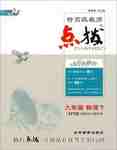题目内容
Exhibition: Little Angels
Date: January 10 - September 13, 2010
Time: 10:00 am - 5:00 pm
This exhibition shows more than 25 paintings by the Mount brothers, exploring the ways in which the artists use images of children in their work and why these images are still popular today.
Museum admission: $9 Adults / $7.00 Seniors /
$4.00 Students'/Free for children under age six
Where: The Long Island Museum 1200 Route 25A, Stony Brook, NY 631-751-0066
Summer Docs Series
Date: June 25, 2010
Time: 8:00 pm
For the first time since its founding in 1993, The Hamptons International Film Festival, working with Guild Hall, will expand its programme to host a summer documentary (纪录片) show with three films that focus on various cultural and social themes.
Award-winning actor Alec Baldwin will serve as host for all three films, beginning with The Cove, an environmental documentary about the dolphin capture (捕猎海豚) trade on Friday, June 25th at 8:00 pm.
The other films will be screened on July 31st and August 25th.
Where: Guild Hall 158 Main Street, East Hampton, NY 631-324-0806
Admission: $20 / $18 Guild Hall members
Not Your Typical Solar Energy Class
Date: June 18, 2010
Time: 7:30 pm--9:30pm
Sunshine is free and so is this "Not your typical solar energy class". Learn how solar electric and solar hot water can cut your bills. Free admission, plus free food and drink, and free "green" gifts.
Where: The Velux Building 2905 Veteran' s Memorial Hwy, Ronkonkoma, NY 516- 809- 7182
Stony Brook vs. Brown
Date: September 19, 20 I0
Time :6:00 pm
* High School Night
* Tickets are free for all Stony Brook students with a Stony Brook ID. Wear red and support your Stony Brookers! Tickets can be bought at our website.
* Game time may change.
Where: LaValle Stadium at Stony Brook University Nichols Rd, Stony Brook, NY 631-632 -9556
1. The title of the exhibition Little Angels probably refers to _____。
A. visitors B. talented artists C. the Mount brothers D. children
2. The "Not your typical solar energy class" will _____.
A. give visitors free presents
B be held in NY 631 -324 -0806
C. provide food and drink at a low price
D. tell you how to cut bills when shopping
3. The last part is probably an advertisement for _____.
A. a web game B. a sports game C. a music concert D. a sports meeting
DAB

 特高级教师点拨系列答案
特高级教师点拨系列答案